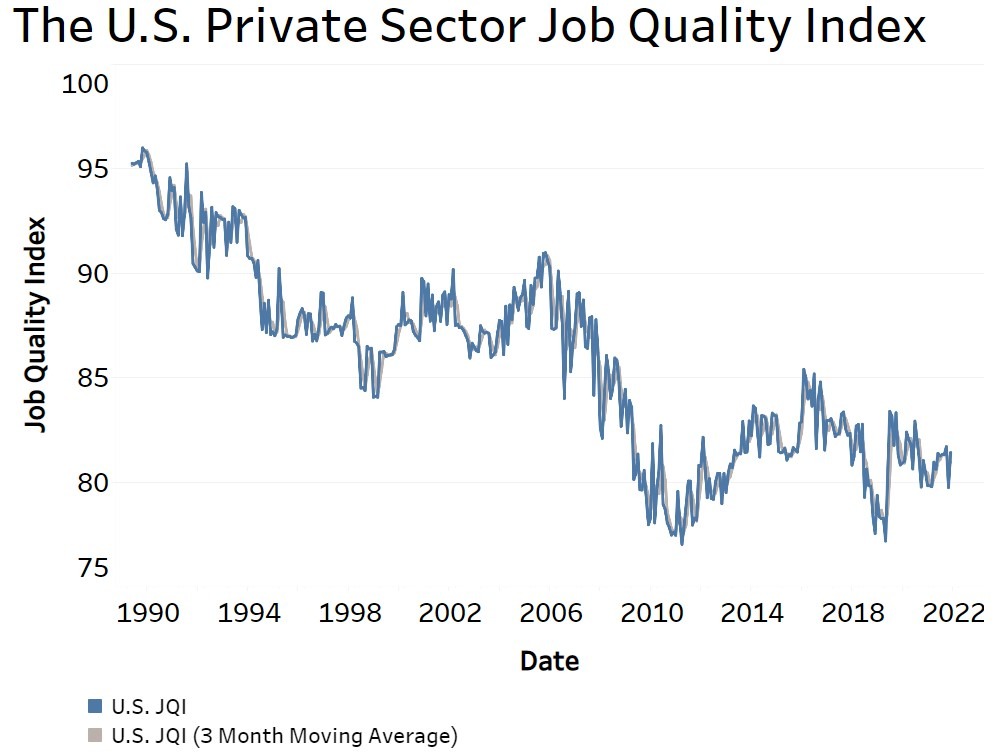WASHINGTON — The Coalition for a Prosperous America (CPA) today announced that the U.S. Private Sector Job Quality Index (JQI) rose by a slight 0.03% 81.03 in September as both low-quality and high-quality jobs rose.
Low quality jobs, i.e. jobs that pay weekly wages below the national average for all production and nonsupervisory workers, increased in the latest month, including jobs in food service, health care, and the arts & entertainment sectors. These downward pressures on the JQI were offset by an increase in high-quality jobs, primarily in the professional and business services sector.
The average weekly wage for production and nonsupervisory workers came in at $941.74, up 0.58% on the previous month and 5.25% on the year-earlier figure. That annual increase is well below the current rate of consumer price inflation, indicating the average production and nonsupervisory worker lost some 3% of purchasing power over the past year. However both this level of wage inflation and consumer price inflation remain well above the Federal Reserve’s target rate of inflation of 2%, suggesting more interest rate increases are likely.
The Bureau of Labor Statistics reported today that the U.S. added 261,000 workers to nonfarm payrolls inOctober, while the unemployment rate rose to 3.7%. However, the labor force participation rate fell slightly to 62.2%, suggesting wage and salary levels are not high enough to get people back to work.
Manufacturing employment rose by 32,000 in October to reach a total of 12.922 million. The increase in jobs was dominated by motor vehicle manufacturing, computer/electronics manufacturing, and fabricated metal manufacturing.
“The weak labor force participation rate suggests millions of workers are still reluctant to take jobs, while the increase in restaurant work and the low-paid portion of the health care sector shows that the job growth is still too concentrated in low-paid sectors,” said CPA Chief Economist Jeff Ferry.
The Job Quality Index measures job quality for U.S. production and non-supervisory workers by comparing workers’ weekly wages to the mean weekly wage for all non-supervisory workers. Those jobs above the mean are classified as high-quality and those below the mean are low-quality. The JQI is down 14.5% from 1990 (see Figure 1), when the current data series begins, illustrating the aggressive growth in low-quality jobs, which are low-wage and often low-hour too.
Figure 1. Job Quality Index 1990-2022












